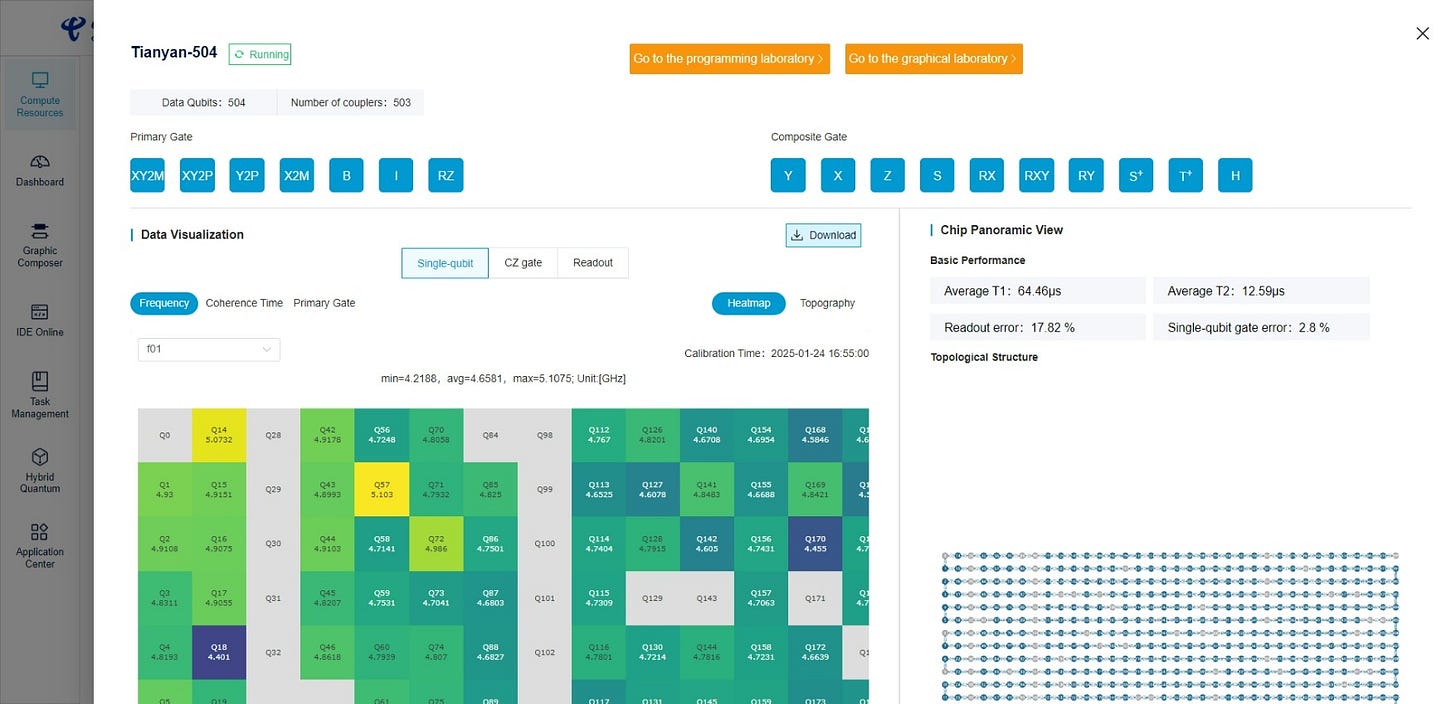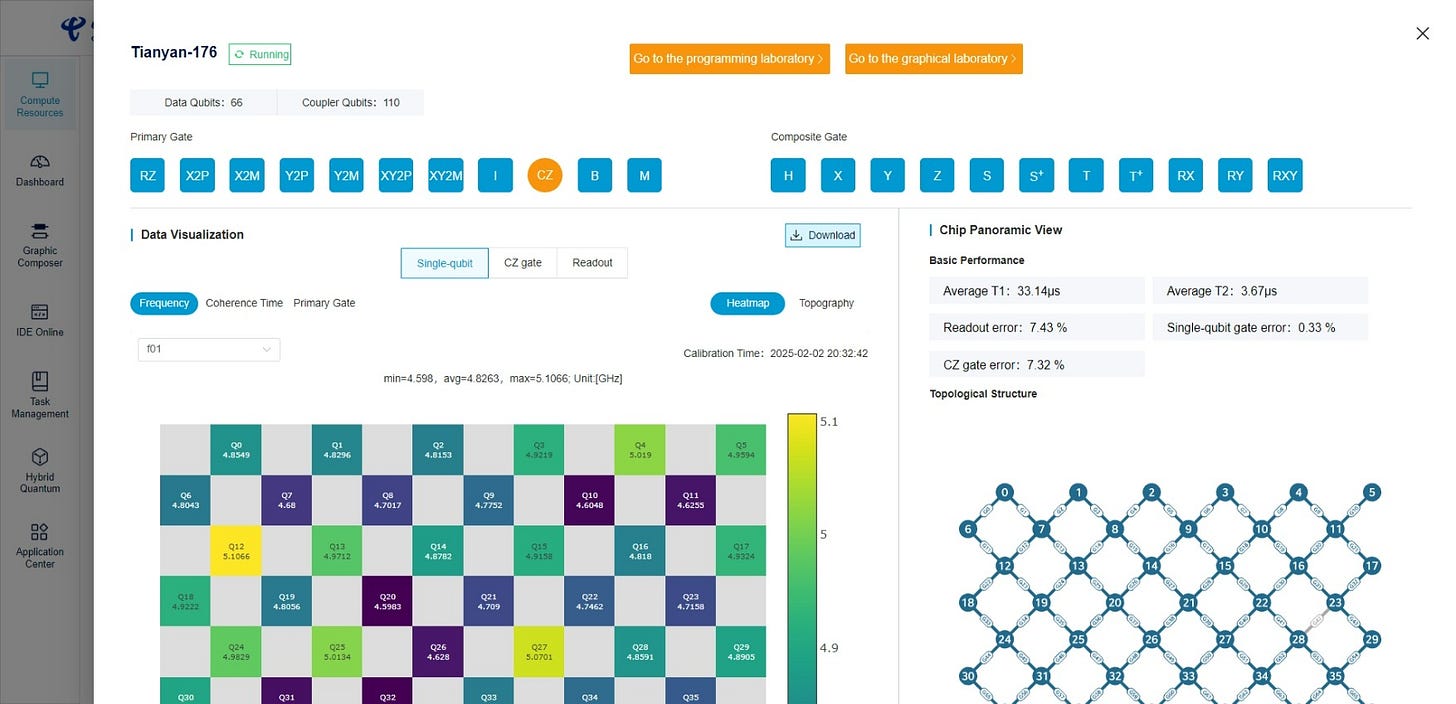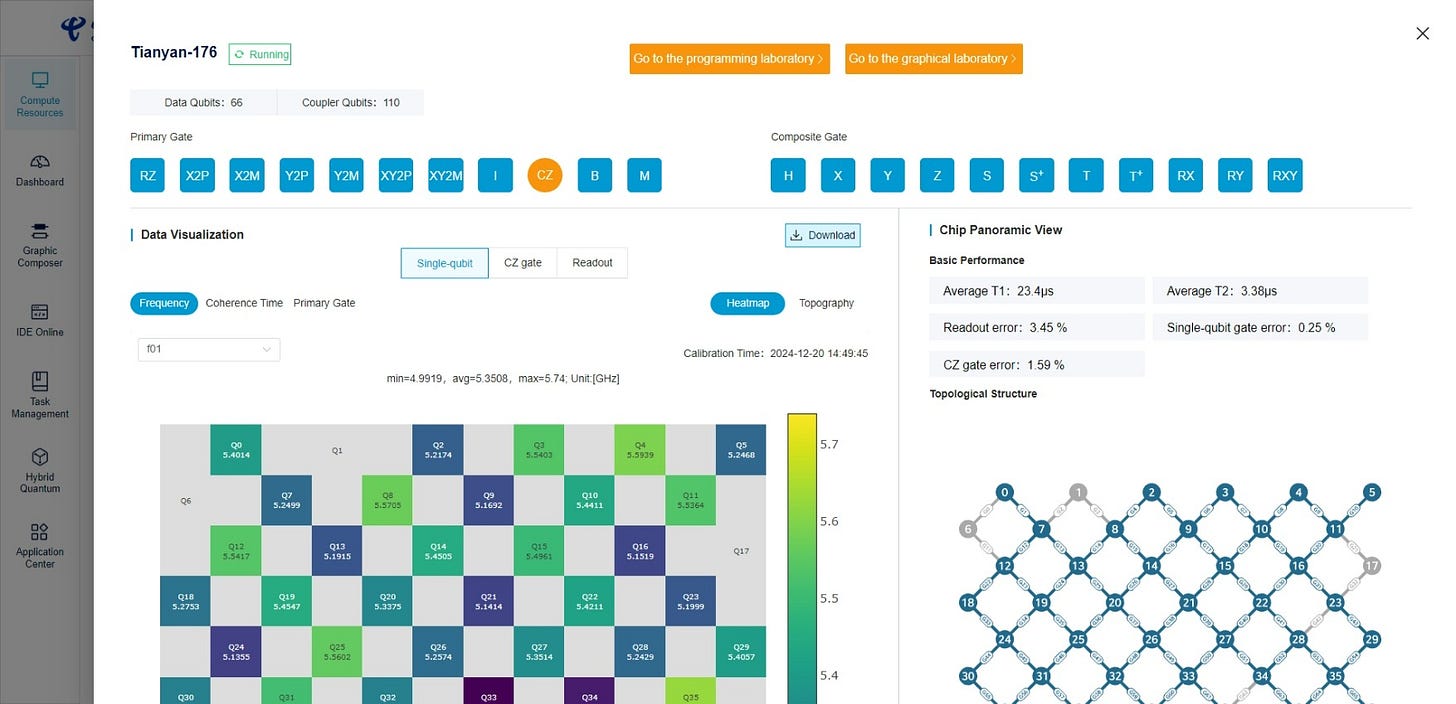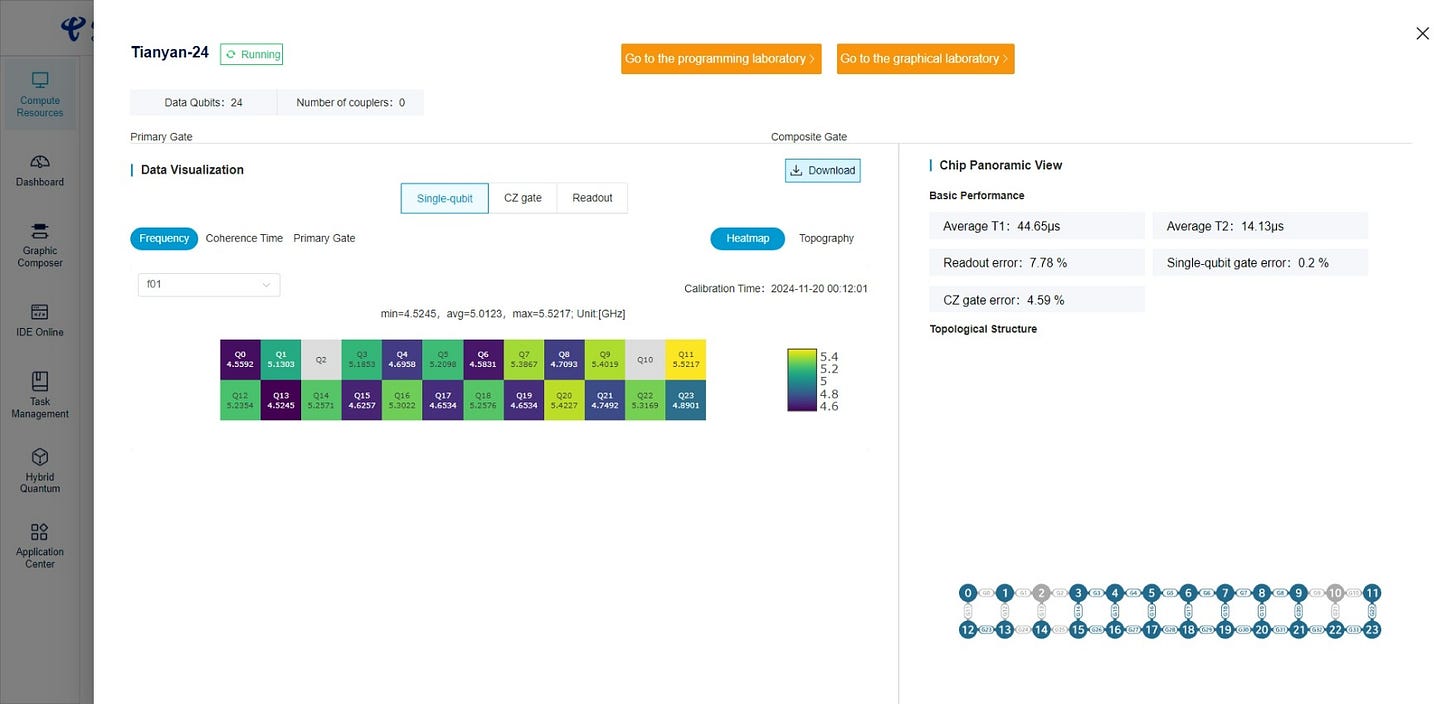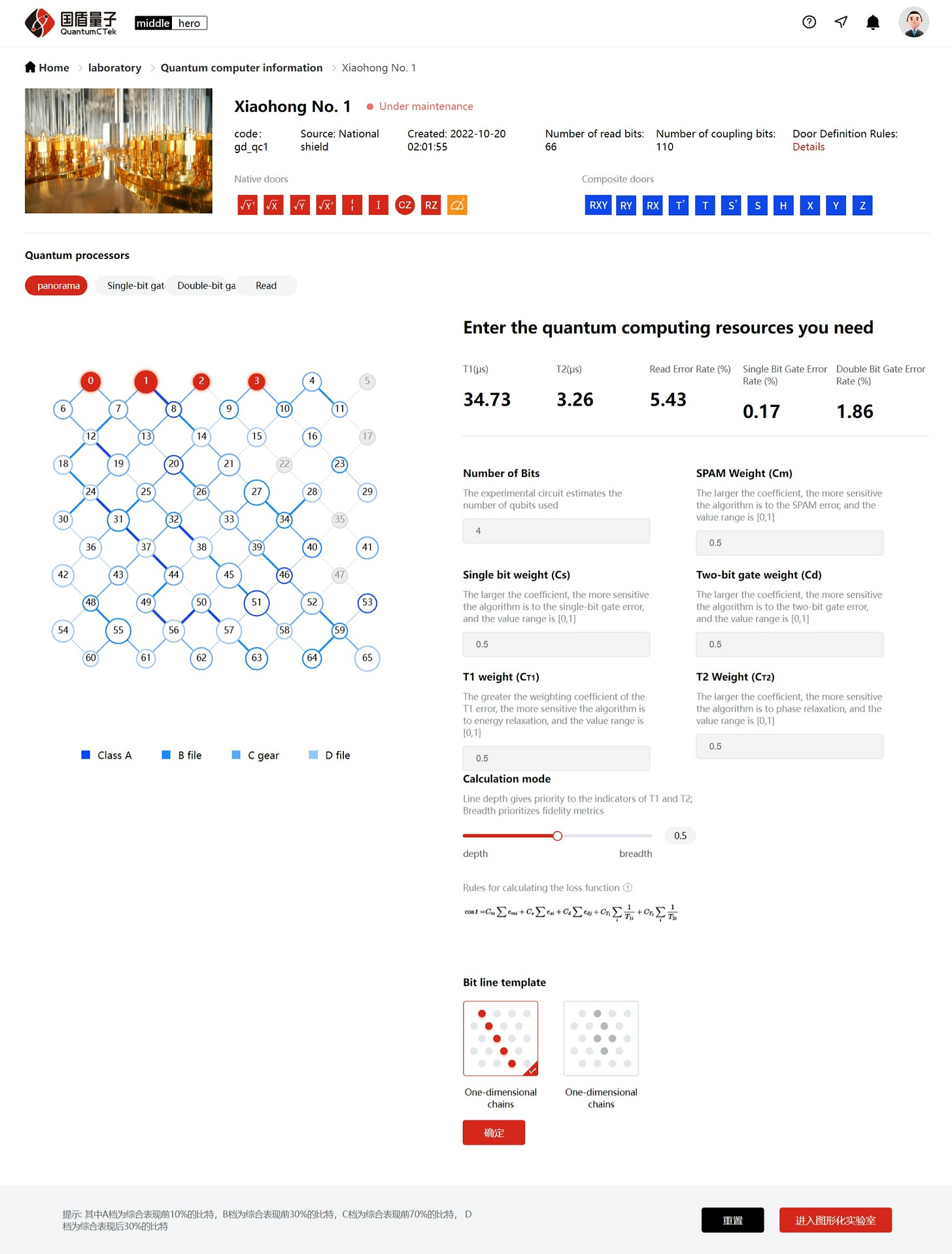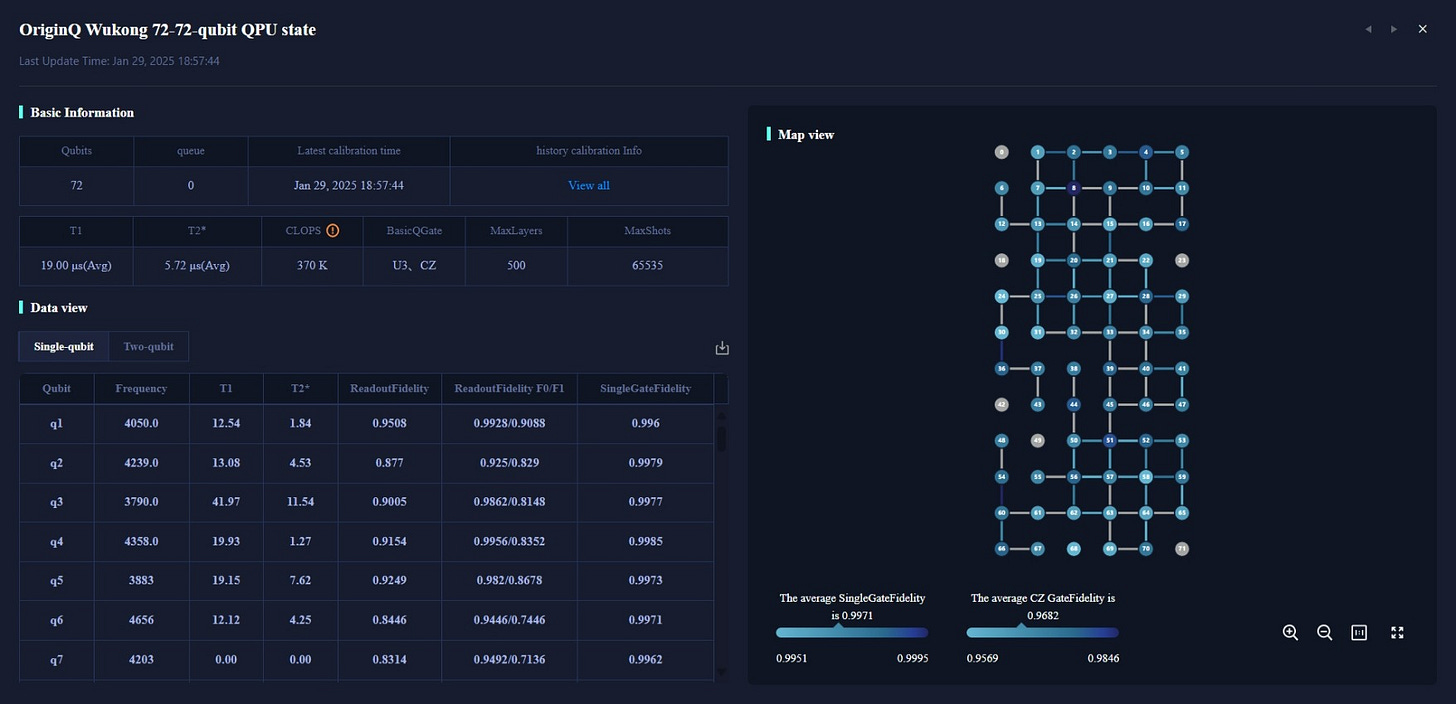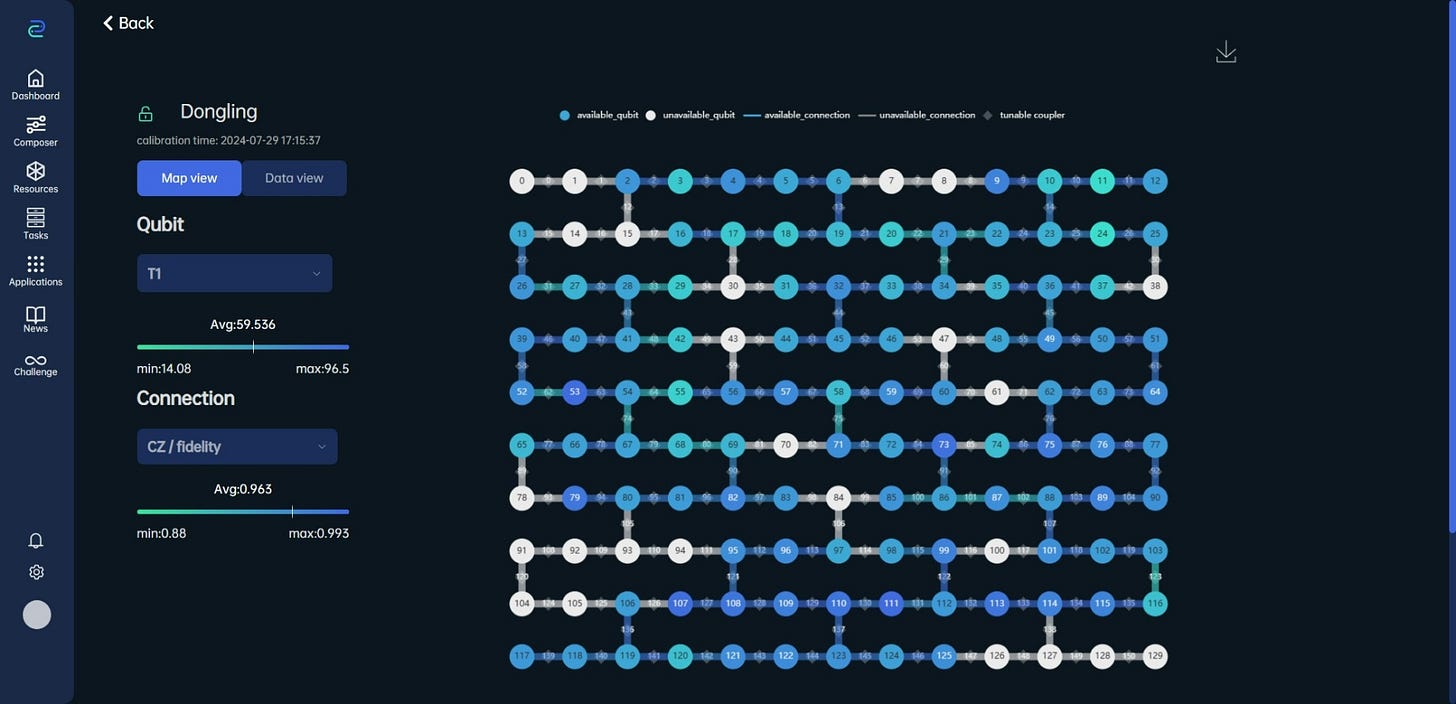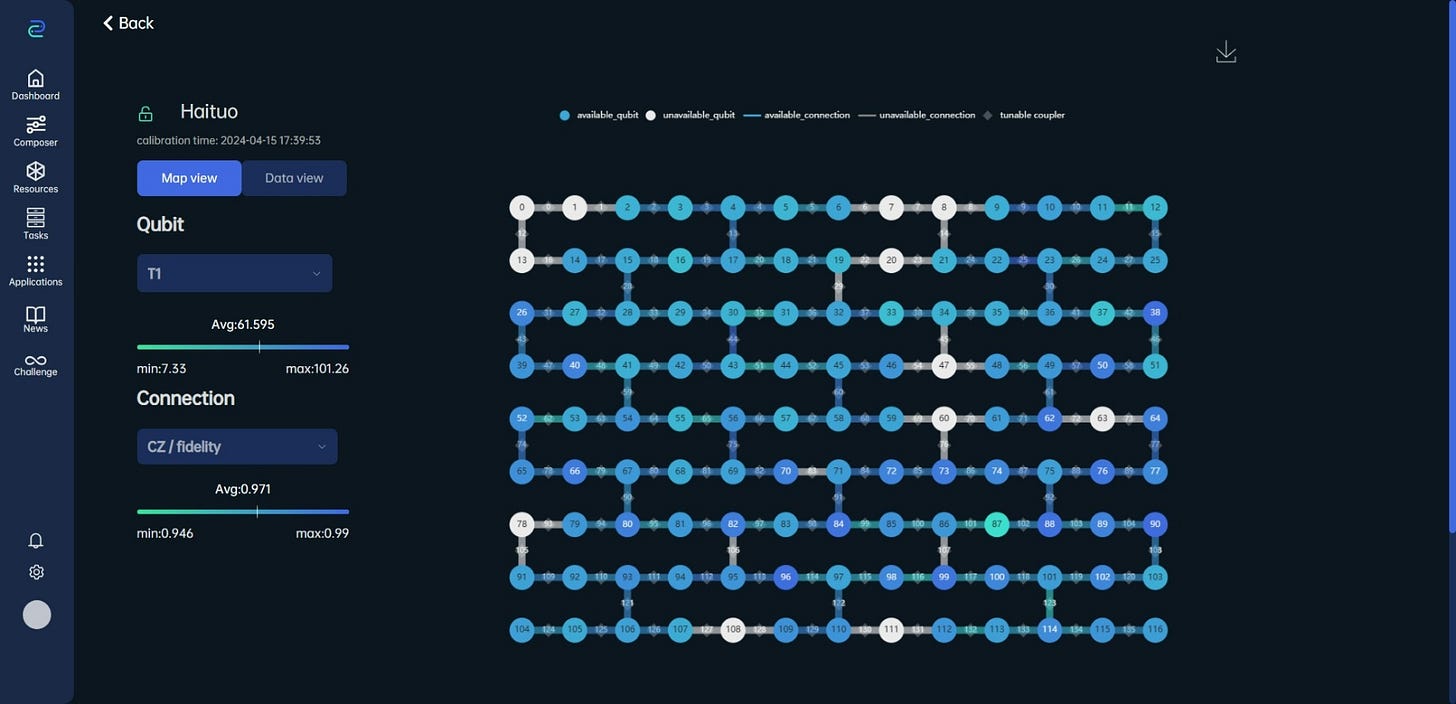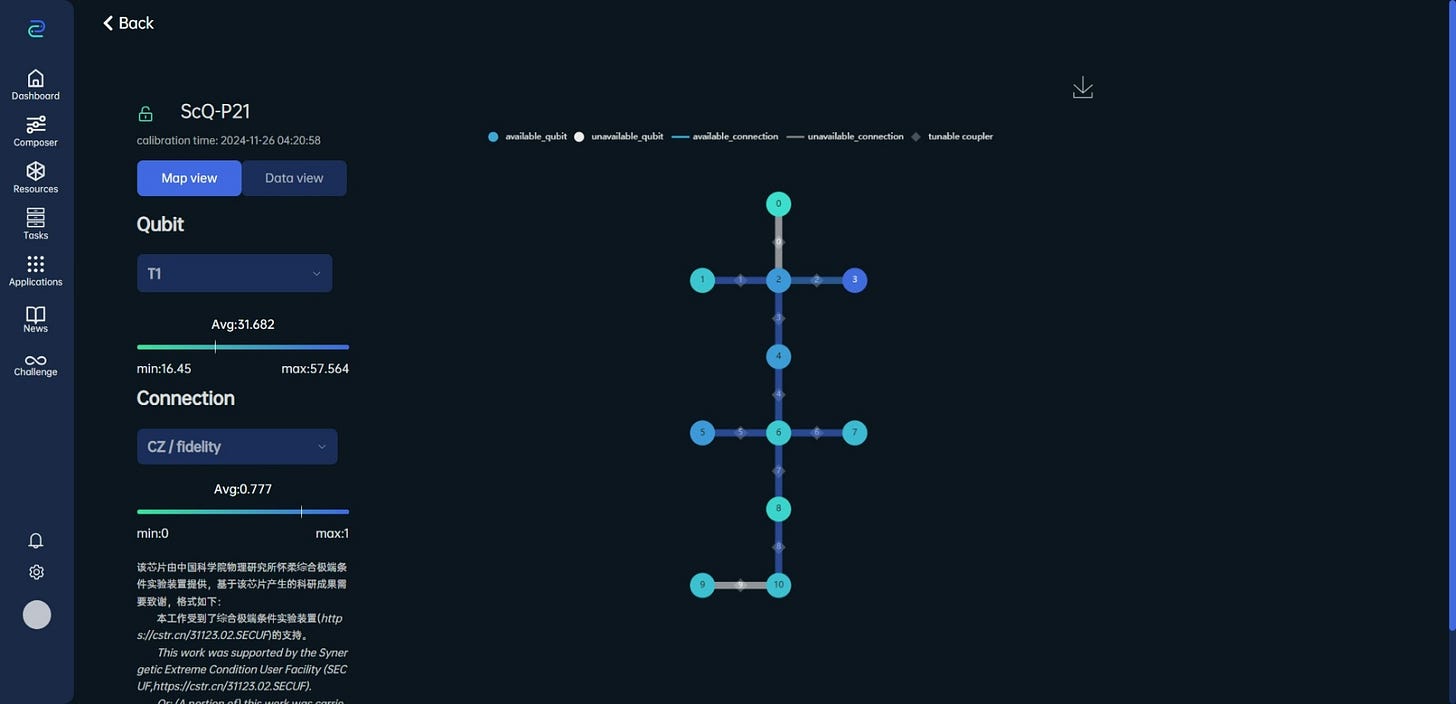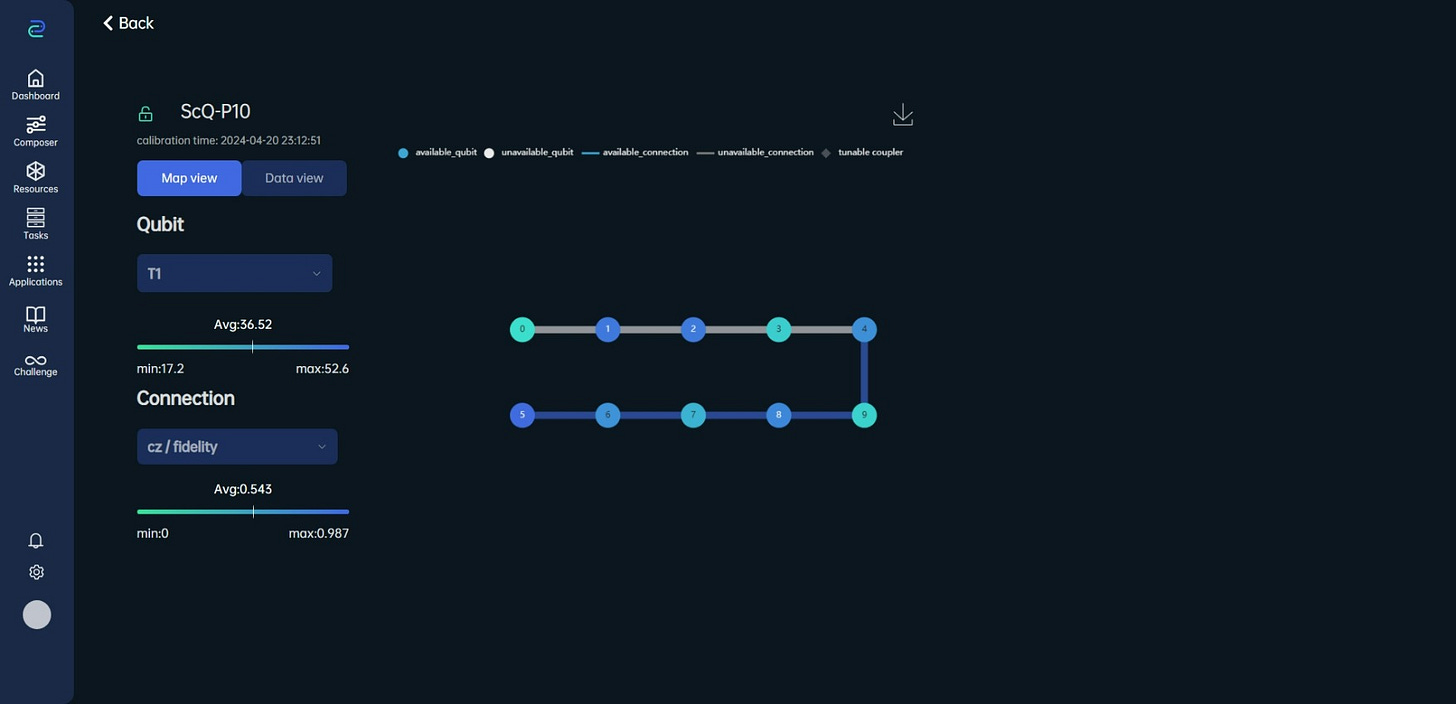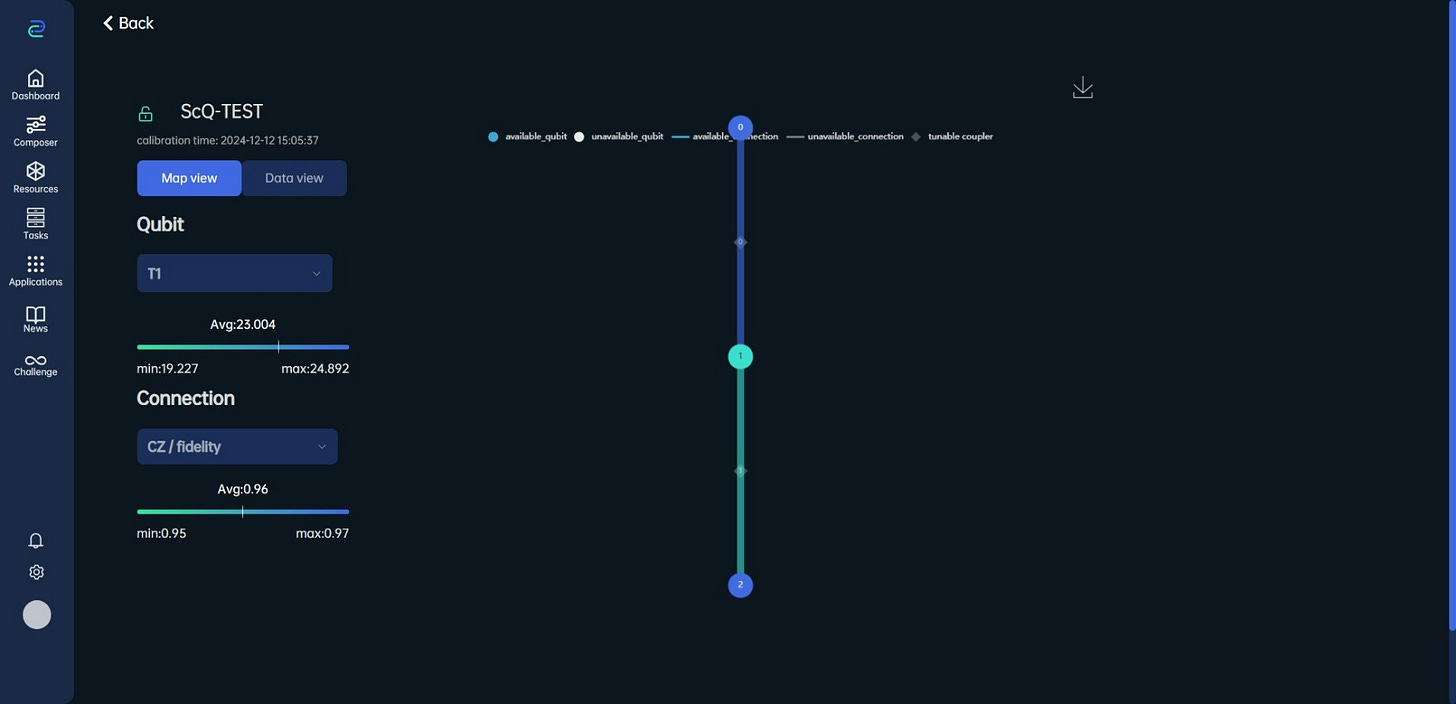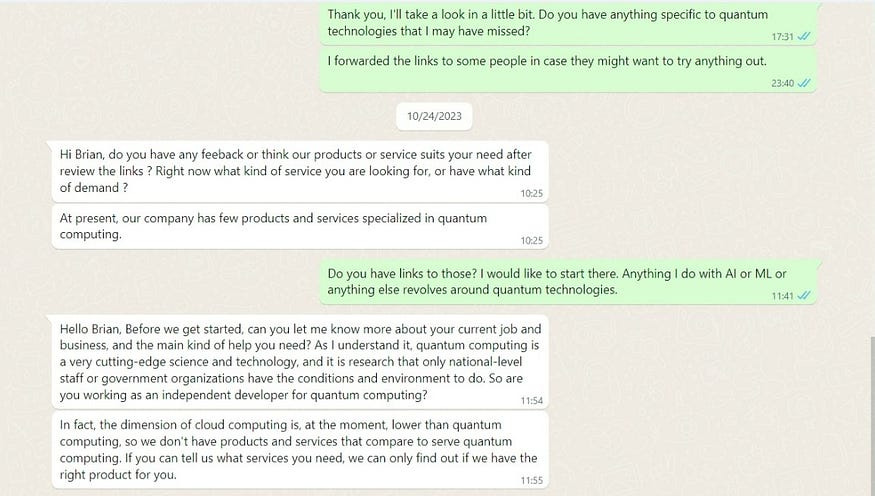I’ve published two articles about China’s quantum computers, and this update is significant enough to warrant a fresh article. This time, I’ve decided to rank them from all-stars to benchwarmers, starting with the mighty Jiuzhang museum piece — sorry, spoiler alert — and ending with Alibaba’s possibly imaginary device. If there were such a thing as steroids for quantum computers, China has been busy injecting vegetable oils.
USTC Jiuzhang
I searched for Jiuzhang back when the “supremacy” claim was made and couldn’t find it. I recently searched again, in both English and Chinese, and didn’t fare much better: just one web page. It states that “in 2023, the model was permanently collected by the National Museum of China.” Intriguingly, I’ve searched the museum’s website and can’t find anything for “jiuzhang,” “quantum,” and a bunch of other keywords.
China Telecom’s Tianyan-504 (Xiaohong), Tianyan-176 (Zuchongzhi2), Tianyan-176 (Zuchongzhi2), Tianyan-24
You can scrutinize the numbers and the disconnected qubits, but two things jump out when you try to use these devices: 1) Tianyan-504 has no entangling gates, and 2) Tianyan-24 has no gates at all. Tianyan-176 and Tianyan-176 at least have CZ gates, but they’re confusing to work with since they share a name; I’ve never seen that anywhere else. You can use these devices' composers, sort of, but you can’t submit jobs or use programming without an account, which seems to require a local phone number. I’ve never seen drag-and-drop circuit builders generate QASM errors, but a simple Bell state on Tianyan-176 does just that.
QuantumCTek Xiaohong No. 1
While China Telecom has an unnumbered Xiaohong chip, QuantumCTek specifies that it has Xiaohong No. 1. Interestingly, QuantumCTek once announced that it would host a Zuchongzhi 2.0 chip, and Xiaohong No. 1 matches the specified qubit counts. So, we seem to have Xiaohong and Zuchongzhi chips at China Telecom, and a Xiaohong device with a Zuchongzhi chip at QuantumCTek.
USTC Zuchongzhi 3.0
I looked up every organization listed in “Establishing a New Benchmark in Quantum Computational Advantage with 105-qubit,” and not one of them mentioned Zuchongzhi 3.0, not even USTC, either in original English or translated from Chinese. The closest I have been able to find are China Telecom’s Tianyan-176 and Tianyan-176, both of which have Zuchongzhi2 chips, and probably QuantumCTek’s Xiaohong No. 1, which matches the Zuchongzhi 2.0 chip that was promised.
OriginQ Wukong
Wukong has enjoyed a couple of news cycles. One of the claims is that Wukong is being used by researchers around the world blah, blah, blah, but I’m in the same time zone as China and I’ve never seen the queue higher than one. In this screenshot, taken on a workday during work hours, the queue is zero. To Origin Quantum’s credit, the connectivity used to look a lot worse… if you can believe that.
BAQIS Baihua, Dongling, Haituo, ScQ-P21, ScQ-P10, and ScQ-TEST
BAQIS currently has six systems available, ranging from 3 to “156” qubits. Sadly, only the three-qubit ScQ-TEST has 100% of its qubits and connections “functional.” Even the 10-qubit ScQ-P10 can’t seem to pull that off. The numbers don’t lend themselves well to screenshots, unfortunately, but you can see the extreme T1 ranges on the larger devices.
SpinQ SQC
SpinQ makes less information available than the other providers. The only topology I can find is that of the 8-qubit online device, which is linear. In other words, qubit0 and qubit7 each connect to only one other qubit, while qubit1 through qubit6 each connect to exactly two qubits. In case you’re wondering: yes, I’m intentionally ignoring the NMR devices.
Baidu Qian Shi
Baidu used to have a publicly available 8-qubit device called Qian Shi. Its specs were 31.0 µs T1, 8.7 µs T2, 99.8% single-qubit gate fidelity, 96.4% CX fidelity, and 96.8% CZ fidelity. Baidu was reportedly going to send what it had to BAQIS, but we can see above what BAQIS currently has.
Alibaba
I read a few years back that Alibaba had a quantum computer, so I created a cloud account and searched for it. Nothing. So, I asked about it. Nothing. Then came the news claiming that Alibaba was getting out of quantum and sending the tech to Academia. But if they had nothing, what was sent? Let the record show that Zhejiang University, the supposed recipient of Alibaba tech, shows no evidence of having an 11-qubit superconducting quantum computer, which is what Alibaba allegedly had, or any other quantum computer, for that matter. This link might require a Medium account.
Conclusion
We can’t verify the claims made about Jiuzhang or Zuchongzhi 3.0, but we can compare the claims made about Tianyan-504 and Wukong to what we can actually see. We can also take a broader look at China’s quantum computing landscape and see that they strongly favor a “broken” topology. I don’t know about you, but I’m curious how effective this strategy will be with error correction codes. The combination of broken qubits, broken connections, and broken codes seems like the clearest path toward fault intolerance, and I have to admit: China is leading the way.
Image generated by an AI model provided by Microsoft Copilot.







